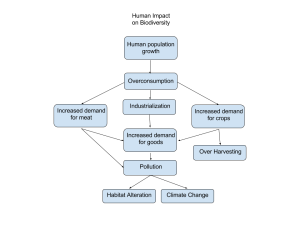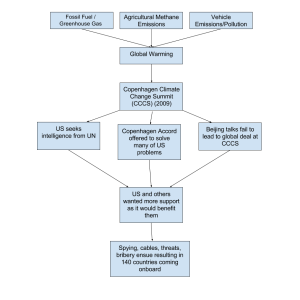- Using the information from Module 10, create a diagram that details human impact on biodiversity
2. In 100-150 words explain why biodiversity is important
The reason biodiversity is so important is that it encompasses everything around us. When one part of an ecosystem is changed it sets off a chain reaction and branches out to almost every other part link of the chain even slightly related. If there is an overpopulation of a certain carnivore it reduces the population of their prey. If their prey becomes underpopulated, there could be surplus of their food in the area. This is a small example of the many ways change in one place can affect change in many others. More influential species such as humans can massively affect biodiversity, as outlined in my diagram above.
3. In 100-150 words describe how climate change affects biodiversity
With rapid climate change there are several elements of ecosystems that are affected. A recurring trend in biodiversity is one element affecting the next and the next and the next. When temperatures rise it melts the polar ice caps which affects sea levels which affects land animals on coastal areas. Humans would be greatly affected by the rise in sea levels because many of the world’s largest cities are located on coasts and would be impacted very strongly. This would also result in migration to safer areas which would cause habitats to be unstable. Global warming increases ocean stratification and acidification which affects underwater life and coral reefs.




